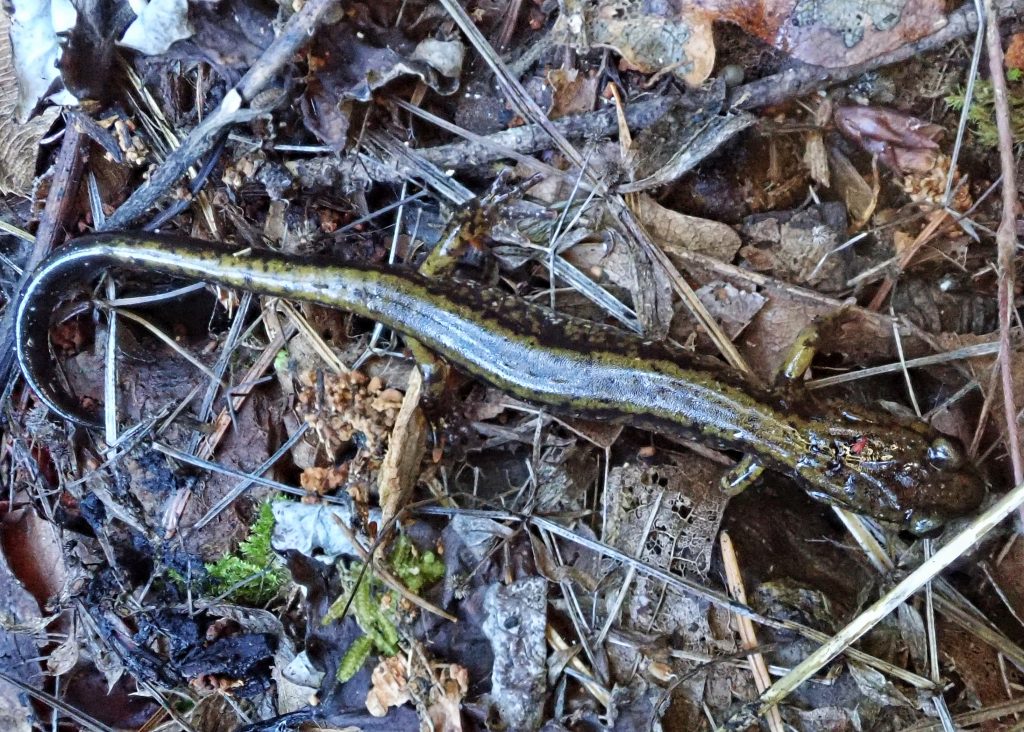
These are fun salamanders to find! Unlike Ensatina, which are usually found under wood, Dunn’s Salamanders are mostly found under rocks. They often freeze when first uncovered, and offer fairly good photo ops, but once spooked they will quickly wriggle down through small cracks and crevices and disappear in moments. If they haven’t fled on their own it is often best to wet your hand and nudge them out of harms way before replacing the rock they were under. I can tell you from experience that it is difficult to gently and precisely reposition heavy boulders and cobblestones over a salamander without risking injury to the creature. They will find their way back into shelter.
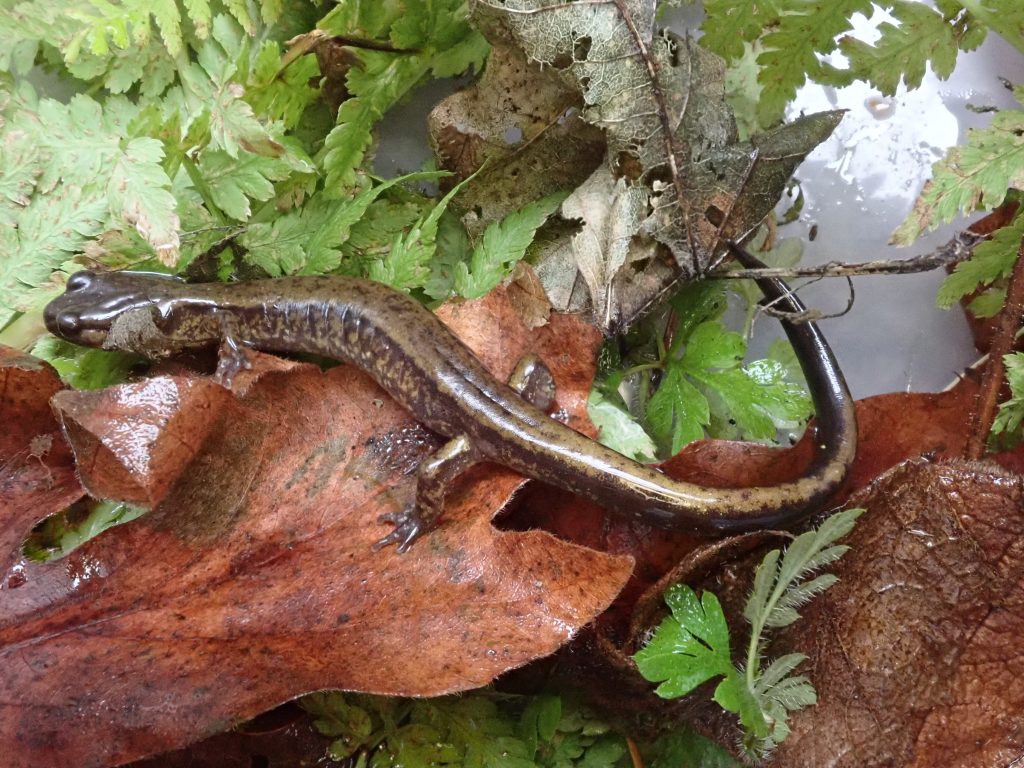
They are members of the family Plethodontidae, the lungless salamanders. They are often found very close to, but not in, cold water streams. Within their rather limited range and habitat preferences they are not uncommon. Plethodon refers to rows of parasphenoid teeth that are unique to this family, and are located near the back of the palate, but the Plethodon spp have another interesting dental quirk. During breeding season the front teeth of the males grow longer, and he uses them during courtship to bite through the skin on the back of the female’s head. Then he rubs pheromones from a gland under his chin into the female’s wounds, thereby increasing her receptivity to his advances. Other aspects of their courtship and reproduction are similar to Ensatina, as discussed here.
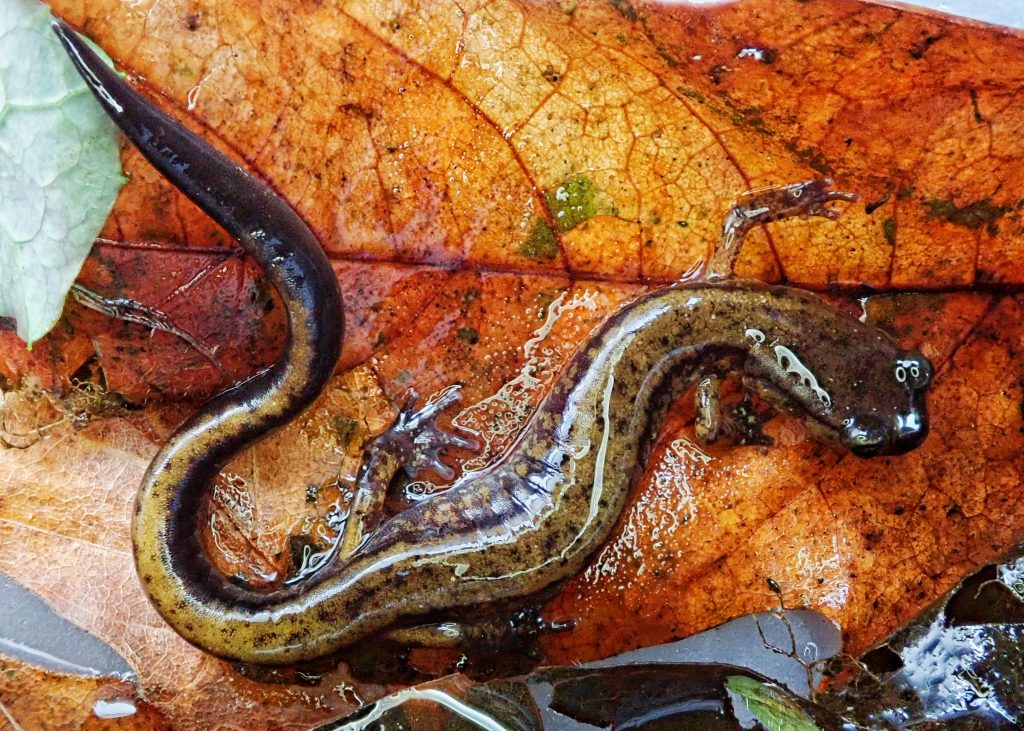
Description– This is the largest of our region’s Plethodon spp. (up to 75mm, snout to vent). They are dark brown or black, with a yellow, green, or tan back stripe that has uneven edges and black or brown mottling, and which doesn’t reach the end of the tail. The sides are mottled with the same color as the back stripe. The ventral side is gray with yellow specks
Similar species– P. vehiculum (Western Red-backed) has an even edged back stripe that goes all the way to the end of the tail, and lacks side blotches. Melanistic P. vandykei (Van Dyke’s Salamander) have a back stripe that extends to the tail tip, and a yellow throat.
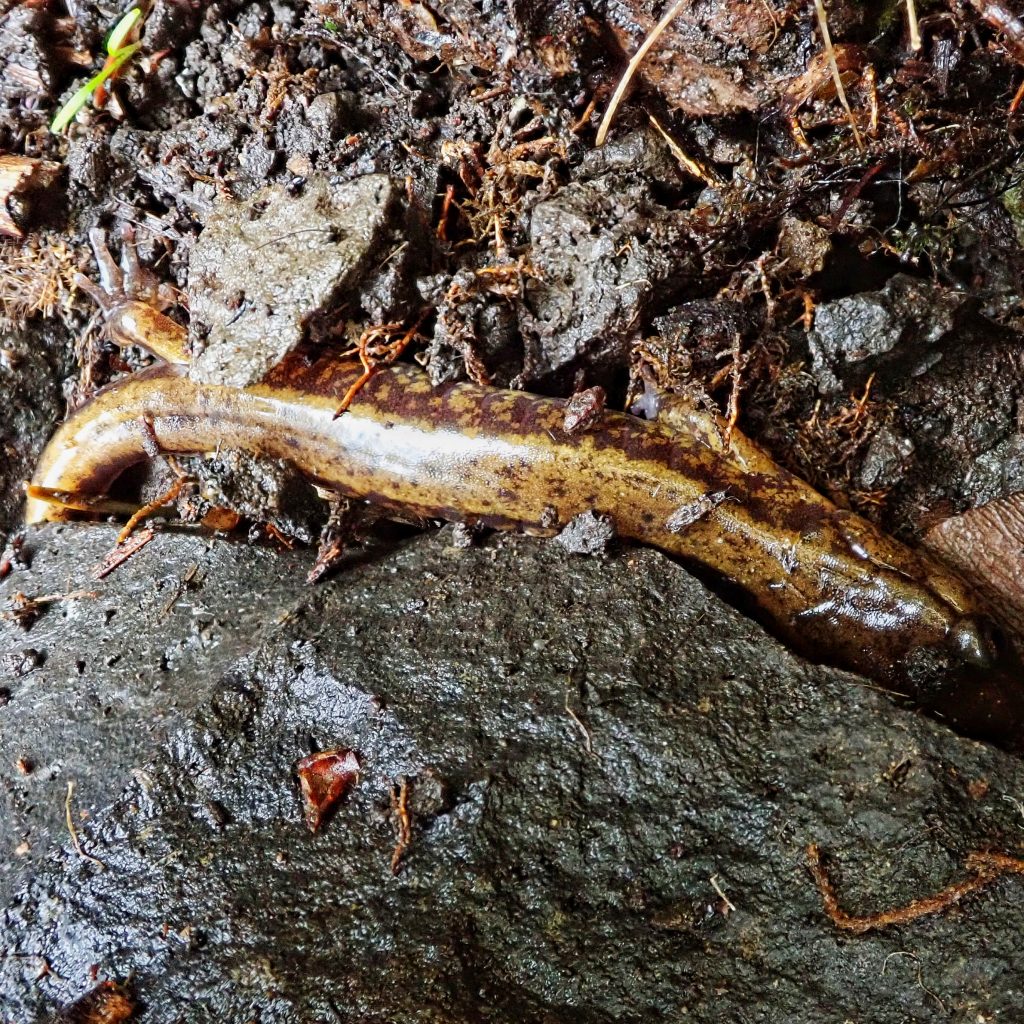
Habitat– Mesic forests, along streams, and in damp talus slopes.
Range– Found in Washington only in the Willapa Hills, and south along both sides of the Coast Range to ne California. Mostly absent in the Willamette Valley, but present on the west slope of the Cascades in Oregon and on the Oregon side of the western Columbia River Gorge.
Eats– Springtails, mites, and many other small invertebrates.
Eaten by– Garter snakes, shrews, dippers, among others; Carabid beetle are frequent predators of the eggs and young.
Adults active– Year around, but deep underground during the coldest and hottest, driest times of the year.
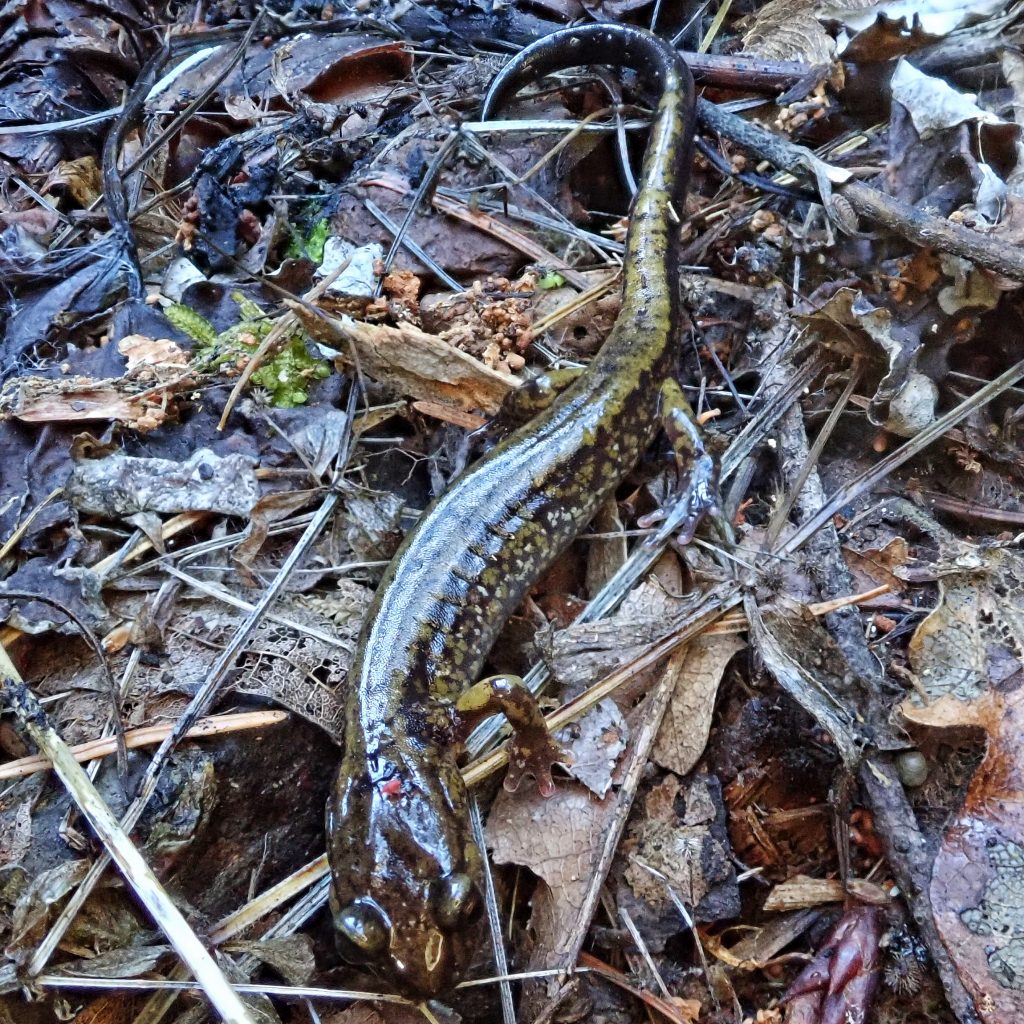
Etymology of names–Plethodon means ‘many teeth’ and refers to the aforementioned rows of parasphenoid teeth. The species epithet dunni honors Emmett Reid Dunn (1894-1956), an eminent herpetologist, and author of one of the seminal works on the study of this family , “Salamanders of the family Plethodontidae” (1926).
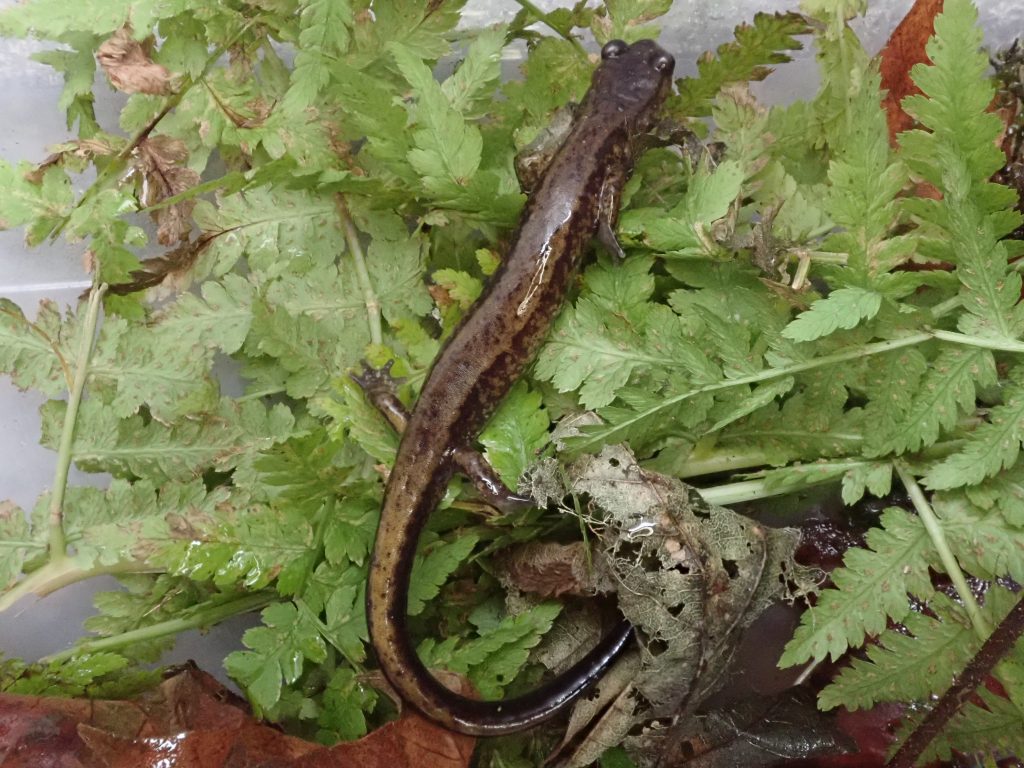
https://amphibiaweb.org/species/4129
http://www.californiaherps.com/salamanders/pages/p.dunni.html
https://science.sciencemag.org/content/123/3205/975
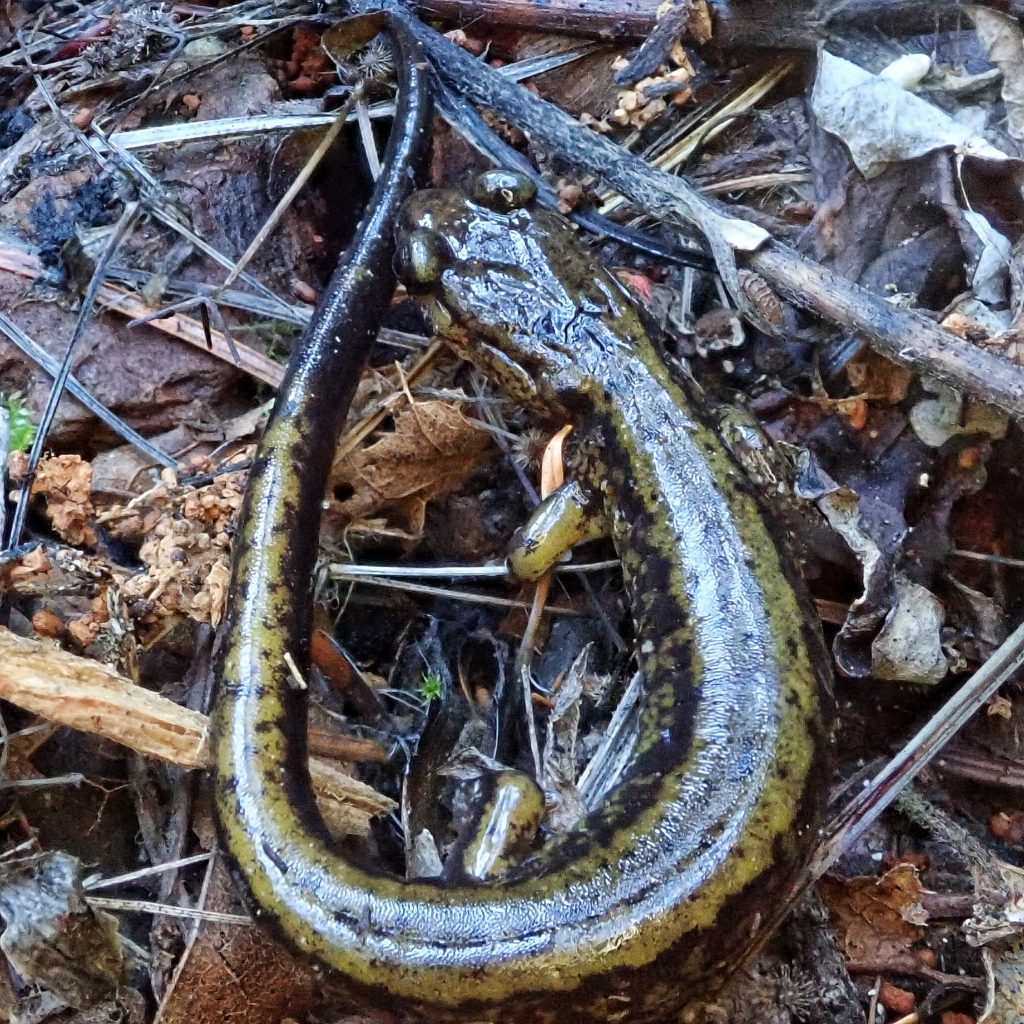
Would love to find one of these!
Good luck! They really aren’t uncommon. Keep looking under rocks and debris near cols water streams and you’ll find them.